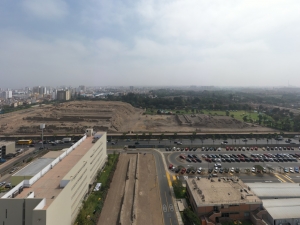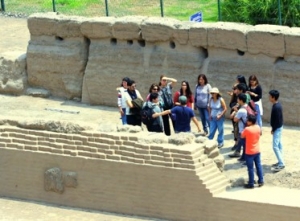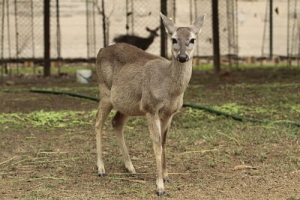Accommodation and tourism
Accommodation:
For access to the corporative rate, place in subject: ISIE2020
The organization of the ISIE Americas 2020 conference, recommends the following hotels:
∗∗∗
|
contact: ltintaya@casa-andina.com |
|
contact: ltintaya@casa-andina.com |
|
|
contact: reservas@lapazaparthotel.com |
|
|
contact: ventas@palmettohoteles.com |
∗∗∗∗
|
contact: ltintaya@casa-andina.com |
∗∗∗∗∗
|
contact: sales@suites-antique.com; reservas@suites-antique.com |
|
contact: ltintaya@casa-andina.com |
|
|
contact: roxana.chang@marriotthotels.com |
|
contact: valeria.noriega@melia.com |
|
|
contact: patricia.seclen@Ghlhoteles.com |
|
|
contact: eaguirre@libertador.com.pe |
Tourist Information:
Lima is the capital and the largest city of Peru. It is located in the valleys of the Chillón, Rímac and Lurín rivers, in the central coastal part of the country, overlooking the Pacific Ocean. Together with the seaport of Callao, it forms a continuous urban area known as the Lima Metropolitan Area. With a population of more than 10 million, Lima is the most populous metropolitan area of Peru, and the sixth largest city in Latin America.
Lima was founded by Spanish conquistador Francisco Pizarro on January 18, 1535, as “Ciudad de los Reyes”. It became the capital and most important city in the Spanish Viceroyalty of Peru. Following the Peruvian War of Independence, it became the capital of the Republic of Peru. Today, around one-third of the Peruvian population lives in the metropolitan area.
On the other side, Lima is the gastronomic city of the Americas with excellent cooking which is considered one of the best around the world, in fact in last years it has won a variety of acknowledgments due to its flavor and mix of Peruvian native resources. “Ceviche” and “Pisco Sour” are the most famous; however there is a diversity of alternatives.
News
The New York Times puts Lima on a list of tourist destinations to visit this 2020
Arts at PUCP
Activities at PUCP:
Paisaje Cultural Arqueológico Camino Inca PUCP
It has been declared Cultural Patrimony of the Nation according to National Directorate Resolution No. 233 / INC No. in 2007, classified as “Archaeological Cultural Landscape” in 2010 according to National Directorate Resolution No. 1522 / INC, and is part of the Inca Road System Qhapac Ñan, inscribed on the UNESCO World Heritage list since 2014, all within the PUCP campus.
 |
 |
Flora
- The university campus has approximately 14 hectares of green areas.
- There are 3,250 trees throughout the campus (Census 2018).
- There are about 400 different botanical species, some uncommon for the city of Lima, such as the baobabs of Africa, catahuas of the Amazon, among others.
Wildlife
- 7 white-tailed deer are found in the PUCP zoo.
- There are also 3 alpacas: Larita (female), of Suri race; Qali (male), of race Huacaya and Paquita (female).
- And 14 motelo turtles.
 |
 |
Fotos crédito: Dirección de Comunicación Institucional.
Museo de Artes y Tradiciones Populares.
Museo de Arqueología Josefina Ramos de Cox.
Recreation at Lima
Listed as the largest conservator of Peruvian art heritage, within a building where the Ministry of Culture also operates. It has a particular structure of five floors. (Javier Prado Este 2465, San Borja).
Museo Nacional de Arqueología, Antropología e Historia del Perú
The oldest in our country and the most representative for its varied and vast cultural heritage, part of which can be seen in our rooms and galleries, making the museum a meeting place with the history of Peru. (Plaza Bolivar s/n, Pueblo Libre).
The Archaeological Museum was founded in July 1926 by the Peruvian collector Rafael Larco Hoyle, who is considered one of the precursors of archeology in the country. (Av. Simón Bolivar 1515, Pueblo Libre).
Is located inside the former Palace of the exhibition, a building of great historical value for hosting the first large public exhibition in Peru, then renovated in 2015 to expand its exhibition halls. (Parque de la Exposición, Paseo Colon 125, Cercado de Lima).
Museo del Banco Central de Reserva del Perú
The collection of the Central Museum is a representative sample of Peruvian art of all time, from ancient times to the 21st century. In our archeology rooms, traditional folk art and republican painting, both continuity and artistic transformations in different eras and regions of our country are reflected. (Jirón Lampa 474, Cercado de Lima).
To view more museums please check the following link:
Other attractions
Touristic Information – Kennedy Park, Miraflores, Lima 18, Peru.
Lima morning tour
A visit to Lima’s downtown, the place where our history as a nation begun. The tour starts at Miraflores go through the modern part of the City until the Historic Center and on the bus we go sightseeing in Lima’s downtown. (Approx. US$ 25)
Tour Santuario de Pachacamac (Ruins in the south of Lima)
Visit an important pre Inca sanctuary to have an aproach with the ancient times also visit its side museum full of important stuff from those times. (Approx. US$ 25)
Lima at night tour + water circuit
This service also includes the entrance to the Magic Water Circuit of Parque de la Reserva
Lima at night tour (Barranco and Chorrillos)
Visit to the main touristic destinations in Lima at night; Colonial Architecture, center of the city, Main Square, parks, churches and the center of Barranco, and Chorrillos, among others (Approx. US$ 25)
Full day – Caral
Considered the oldest civilization of this hemisphere. A tour that is going to take you through the ages to experience of the sacred city of Caral its development is as the same time of Egypt (Approx. US$ 80)
Full Day – Ica con Huacachina
Visit the oasis of Huacachina, practice dune buggies and sandboarding, also try Pisco and wine in the main wine producer region of Peru (Approx. US$ 90)
Please contact MIRABUS for more information about this and other tours
Recreation outside Lima
This mountainous jungle located in the Amazon, belonging to the pre-Inca Chachapoyas culture, served as a defense against some ethnic rebels due to its location and structure. Its mountains, surrounded by dense vegetation, show from afar a great stone wall 20 meters high that protects the city. This fortress has only three entrances, all in the form of narrow and walled alleys.
The strength of Kuélap was awarded as the ‘Best Attraction Abroad’ (Far & Away-Overseas Attraction) by readers of National Geographic Traveler in the United Kingdom.
The Ancashino relief is characterized by the strong altitudinal contrast from the coast at 0 meters above sea level to the mountains at 6768 meters. The desert coast makes up almost 30% of the territory; in front of the Andean areas, from the 1000 meters of altitude that begins in the foothills of the Cordillera Negra to ascend to the Santa River valley with an average altitude of 2800 meters above sea level and then rise to 6768 meters above sea level in the Cordillera Blanca and descend steeply in the eastern highlands to the Marañón Canyon at 2400 meters above sea level.
The temperature generally varies from 4° to 21° C and rarely falls below 1° or rises above 23°. (Celsius degrees).
Some destinations are: Chacas, Casma, Callejon de Huaylas, Chiquián.
The city is located at an altitude of 2328 meters above sea level, the lowest part of the city is at an altitude of 2041 meters above sea level in the sector called Huayco in the district of Uchumayo and the highest is located at 2810 meters above sea level. The central part of the city is crossed by the Chili river from north to southwest that in its path forms a valley, called the Arequipa valley or Chili valley, which is protected to the north and east by the Andean mountain range and towards the south and west by the low chains of hills.
The temperature for july is between 9° – 23° (Celsius degrees)
Some destinations are: Cañon del Colca, Villa Hermosa de Yanahuara, Reserva Nacional Salinas y Aguada Blanca.
Its territory includes mountainous areas and the lowest, the Amazon rainforest. In this region are the first Andean civilizations with the influence of Huari and Tiahuanaco. It is also the cradle of Tahuantinsuyo and site of the resistance of the Incas of Vilcabamba after the Conquest of Peru. It is in this department, in the Marcahuasi farm (Mollepata), where in the 16th century the first vine of the American continent is cultivated and the first pisco is produced.
It was declared a National Historic Monument in 1972 and a World Heritage Site in 1983 by UNESCO and is usually called, due to the large number of monuments it has, the “Rome of America” .
Its climate is generally dry and temperate. It is dry between April and October, with sunny days, cold nights with frost and an average temperature of 13° (Celsius degrees).
Some destinations are: Ciudad del Cusco, Camino Inca a Machupicchu, Complejo arqueologico de Choquequirao, Parque Nacional Manu, Parque Arqueológico de Sacsayhuaman.
The physical space is comprised from the west shore of Lake Titicaca, in the inner bay of Puno (formerly Paucarcolla), on a slightly undulating surface (the central part), surrounded by hills. The upper part of the city has a semi-flat surface (Mi Perú Community, Yanamayo). Oscillating between 3810 and 4050 meters (between the banks of the lake and the highest parts). Puno is one of the highest cities in Peru and the fifth in the world.
Maximum daily temperatures are around 14°, rarely fall below 12° or exceed 17°. (Celsius degrees).
Some destinations are: Mirador Kuntur Wasi, Isla Esteves, Reserva nacional del Titicaca, Portal de Aramu Muru, Sillustani.
For more information, please visit the following link:
